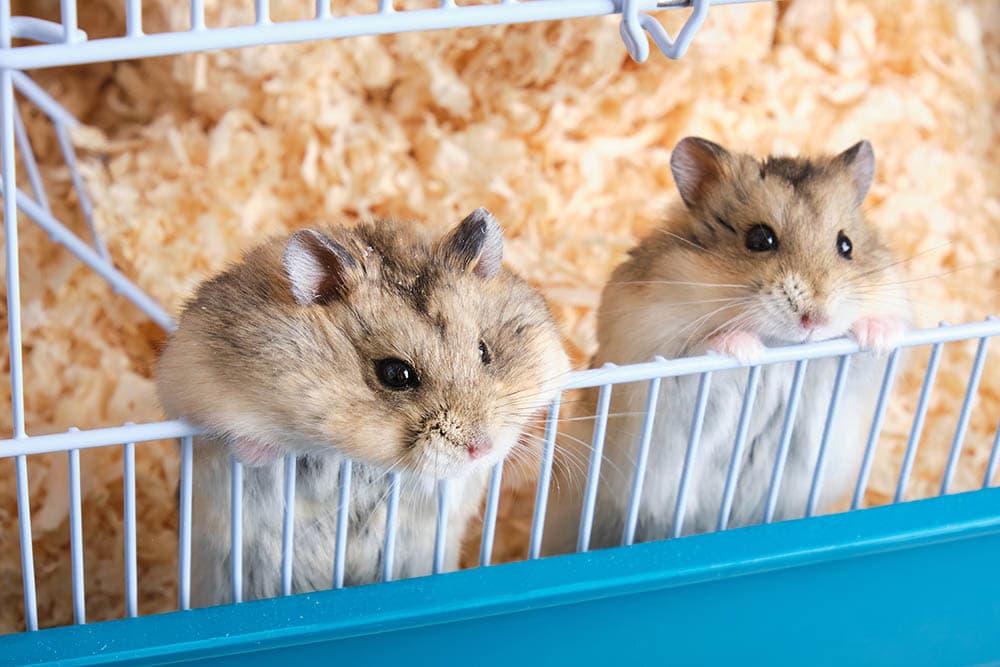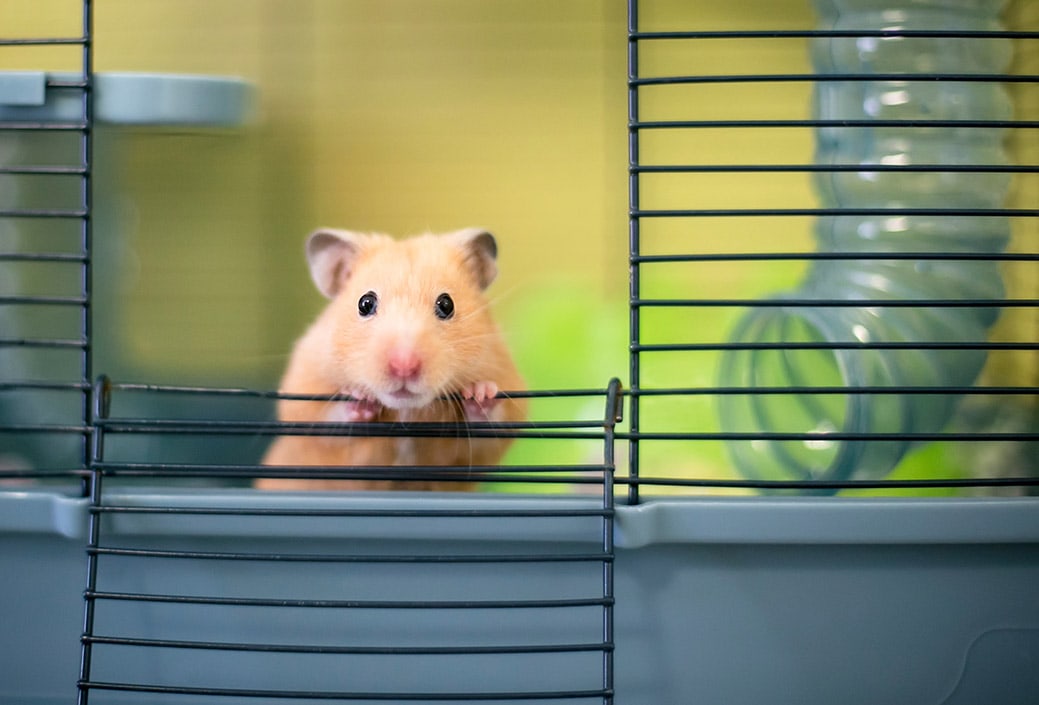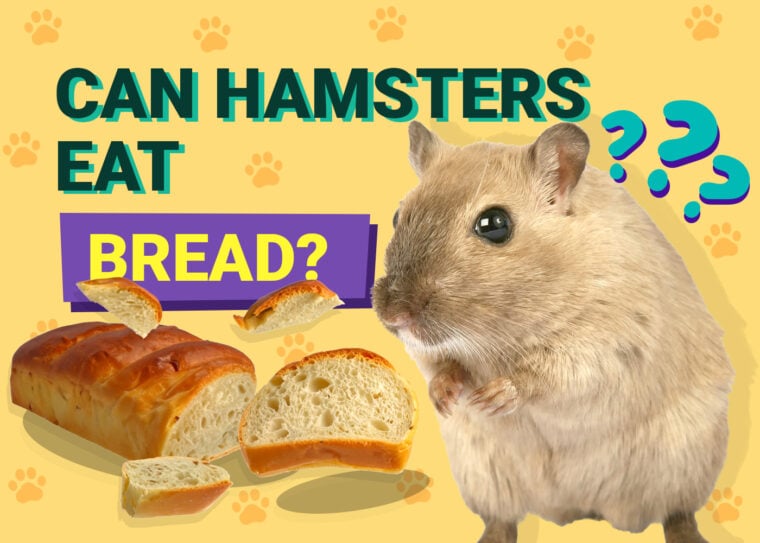
We all eat bread in some form or other: rye, white, whole grain, toast, crackers. In its many varieties, bread is a handy and delicious food that can be a part of a snack or one of your daily meals. But how healthy is bread for your hamster?
Should you even consider giving your hamster bread? The short answer is yes. Bread is generally safe for your hamster in small amounts, but there are some kinds of bread that you should avoid. If you’re considering adding bread to your hamster’s diet, there are a few concerns to be aware of.
A Hamster’s Diet
The name ‘hamster’ actually comes from the German word , which means “to hoard”. Considering how hamsters hoard their food by stuffing it into their cheek pouches, they were aptly named.
Hamsters are found in countries like Belgium, Romania, Greece, and northern China, but they were initially discovered in Syria and brought to North America in 1936. The wild hamster lives in dry and warm areas such as the peripheries of deserts, savannahs, and sand dunes.
In the wild, hamsters are omnivores and will eat a variety of grains, seeds, nuts, vegetables, insects, and fruit. The domestic hamster has its nutritional needs met with commercial pellets that have been created specifically for hamsters. They also consume a variety of seeds combined with small amounts of vegetables, herbs, and fruit.
Where does bread fit into the hamster diet? After all, some bread contains grains and seeds, so maybe it makes a healthy meal or snack for your hamster? We’ll look at the different kinds of bread and whether or not they are suitable for your pet.
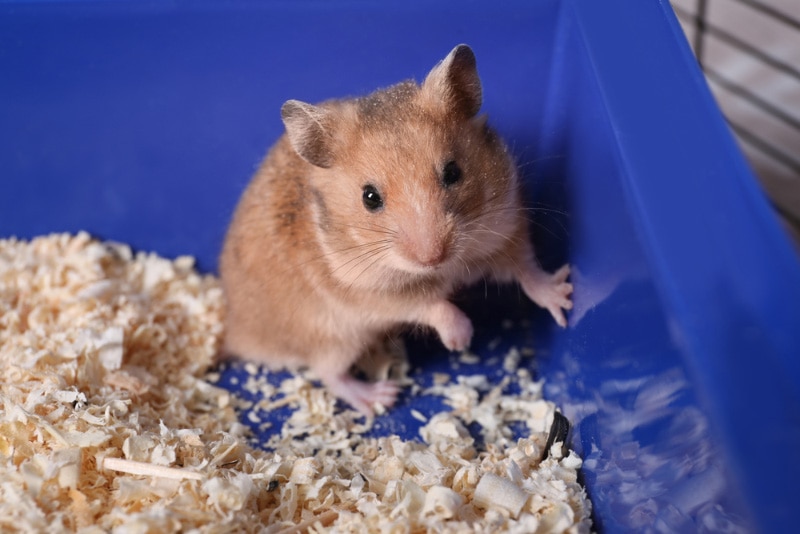
Bread, Glorious Bread
At its very basic level, bread is made from baker’s yeast, grain, and water. The grain used will determine what kind of bread is made. There is a large variety of bread available, so we’ll have a look at the more common breads and discuss the merits of each one to help decide if it is safe for your hamster to eat.
White Bread
White bread has the reputation of being the junk food of all bread. The grain used to make bread is composed of bran, germ, and endosperm, but it’s the bran and germ that hold the most nutrients. To make white flour, the bran and the germ are removed, which is why white bread is considered the least nutritious of all bread. However, some white bread has vitamins and minerals as well as extra calcium and fiber added in to replace nutrients lost during the baking process (this process is known as fortification).

Brown Bread vs Whole Grain Bread
Some varieties of brown bread get their brown color from molasses and not necessarily from whole grains. Even some bread, like honey wheat, multigrain, and seven-grain, may include wheat grain but are not necessarily made with whole wheat grain.
When purchasing your bread, be sure to look at the ingredient list for the words ‘100% whole wheat’ and any ingredients listed first with the word ‘whole’, such as whole rye or whole wheat flour. The U.S. Department of Agriculture’s National Nutrient Database states that one slice of whole wheat bread contains 81.5 Calories, 3.95 grams (g) of protein, 144 mg of sodium, 1.42 g of sugars, 13.8 g of carbs, and 1.93 g of fiber. 1
Rye Bread
Rye bread is generally made from a combination of rye grains and rye flour. There are different varieties of rye bread, such as dark, light, marbled, and pumpernickel.
Dark rye, like whole-grain bread, is made from whole rye grains, but there are dark rye varieties (like brown bread) that are colored with instant coffee, cocoa powder, or molasses.
Light rye bread is made from white rye flour, which like white bread, comes from the endosperm of the rye grain.
Marbled rye is made from dark and light rye rolled together, and pumpernickel is made up of coarsely ground whole rye grains.
Rye bread is high in fiber contains more nutrients than most white and whole wheat bread, and doesn’t affect blood sugar levels to the same degree.

Flatbread
Many types of flatbread are found around the world. Pita from the Middle East, tortilla from Mexico, naan from India, and focaccia from Italy, to name a few. Flatbreads are made with different ingredients— tortillas are made from corn—but many are made with salt, flour, and water, and some may contain yeast.
Is Bread Good For Hamsters?
Because hamsters do well on grains, breads that are made from whole grains, without any additives, are considered good for them in moderation. A small piece about 1 cm x 1cm (⅖ of an inch on each side) offered once a week shouldn’t be cause for alarm for your hamster.
The Downside for Hamsters
So, these are a lot of breads, but which ones are okay for your hamster? Because a hamster’s diet is made up primarily of seeds, bread isn’t necessarily the best thing for them, but we’ll look at the whys and why nots to better determine what breads should be avoided entirely and which are okay as an occasional, small snack.
Ingredients & Seasonings
Some breads and crackers contain added ingredients and seasonings that aren’t good for your hamster. There are also chemicals and additives that you might find in these items, so, again, avoid any crackers with added ingredients and seasonings that really are only meant for human consumption.
Ingredients & Seasonings
Some breads and crackers contain added ingredients and seasonings that aren’t good for your hamster. There are also chemicals and additives that you might find in these items, so, again, avoid any crackers with added ingredients and seasonings that really are only meant for human consumption.
Bread contains a great deal of starch and gluten. Whole wheat contains less starch than white, but all breads are high in starch overall. Yeast and salt are other ingredients commonly found in most bread. Food that is high in gluten, salt, starch, and carbohydrates could lead to some health issues for your hamster, including diabetes, obesity, allergies, and even death.
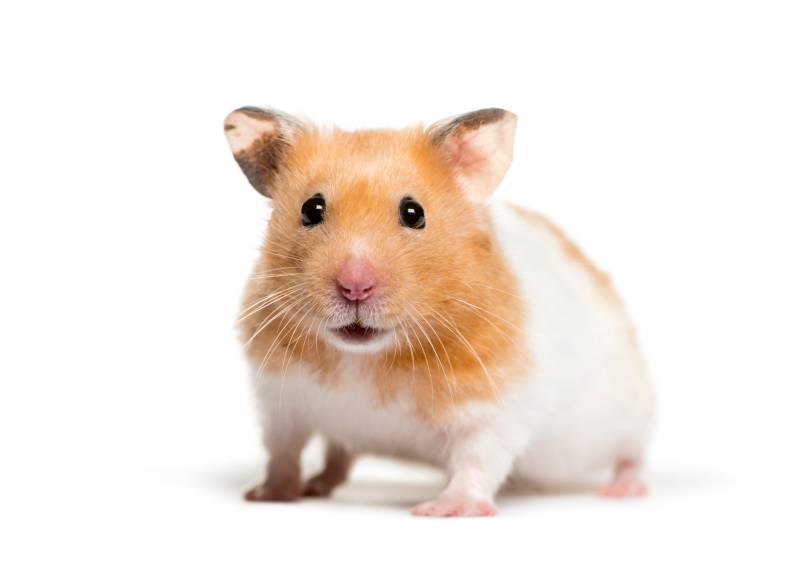
Raw Dough
Of importance is noting that raw bread of any form is extremely toxic for hamsters. Yeast present in raw bread dough produces ethanol, a type of alcohol as a natural chemical reaction. This can lead to alcohol poisoning in your pet, which can be fatal.
Signs of Illness
According to the RSCPA, if a hamster shows subtle signs of being unwell, it could be a sign that he is in severe pain or seriously ill. If you observe your hamster showing any of the following symptoms, you need to take him to your vet immediately:
These signs are a general guide of some of the signs of illness in a hamster and are not specifically related to a hamster that has eaten bread. However, some of these signs could occur if you’re feeding your hamster too much or the wrong kind of bread.
Conclusion
The final say on the subject is that giving your hamster a tiny bit of bread on occasion shouldn’t hurt them. As long as the bread is whole grain, and you stick to the harder, crunchy crusts. While certain kinds of bread are good for people, there are a number of risks to your hamster.
Overall, while bread isn’t the worst thing you could give your hamster, it certainly isn’t the best.




